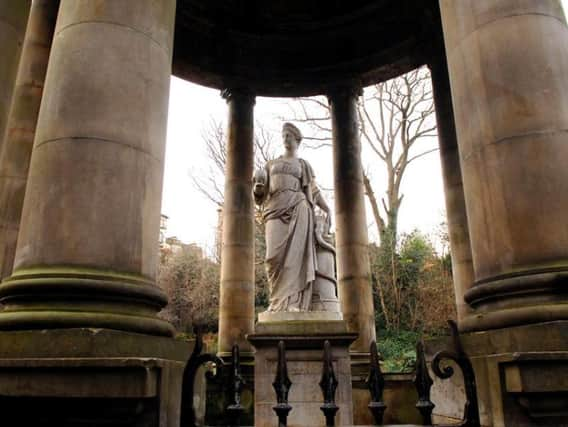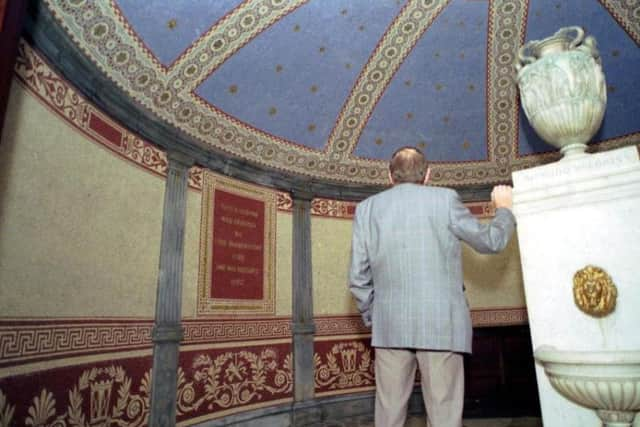A brief history of St Bernard's Well


Between Dean Village and Stockbidge above the Water of Leith proudly stands a statue of the Greek Goddess of Health, Hygeia.
Protected by eight towering pillars, the deity stands atop of one of Edinburgh's best kept secrets - a spring said to be capable of curing all manner of ailments.
Advertisement
Hide AdAdvertisement
Hide AdKnown as St Bernard's Well, the enchanting structure has stood for 229 years.


Taking the waters
In 1760 a natural spring was allegedly discovered by three members of George Heriot's above the Water of Leith and quickly became an attraction for Edinburgh residents.
At the time drinking from springs or "taking the waters" was said to be an effective remedy for healing various maladies.
Twenty-nine years following its discovery, St Bernard's Well was erected and Edinburgh's incarnation of Hygeia was born. The well takes its name from Saint Bernard of Clairvaux who according to local legend had spent time living in a nearby cave


Advertisement
Hide AdAdvertisement
Hide AdThe structure itself was designed by Edinburgh painter Alex Nasmyth, who is best known for his drawings of the city's landscape and his portrait of poet Robert Burns.
Beneath the statue is the pump room which hold's the spring. Ostentatiously designed with mosaics and white, blue and gold paints, the room has been largely closed to the public since 1940.
'The odious twang of hydrogen gas'
The structure and its uses have been romantically praised in the two centuries following its discovery and erection.
Alexander Campbell, the author of A Journey from Edinburgh through parts of North Britain, praised the design and situation of the well describing it as “the chief ornament of this delightful valley.”
Advertisement
Hide AdAdvertisement
Hide AdPoet Claudero, meanwhile, waxed lyrical about the water's healing qualities: "this water so healthful near Edinburgh doth rise which not only Bath but Moffat outvies. It cleans the intestines and an appetite gives while morbific matters it quite away drives."
One Doctor Taylor claimed that the waters provided mental benefits if consumed with coffee: ”such coffee after dinner is an excellent digester. The animal spirits are thereby exhilarated and, from being morose and sulky, we are all at once metamorphosed into gay and cheerful mood.”
Not all consumers of the mineral water were so fond of the drink, however, with one unhappy drinker describing the taste as having the "odious twang of hydrogen gas". One even went as far as to say that the spring's water tasted like "the washings from a foul gun barrel".
How to get to the well
Today, the well is owned by the Edinburgh City Council and maintained by the Dean Village Association (DVA). Caroline Gerard of the DVA notes that maintaining the well consists of "clearing some litter, sweeping it out, trying to polish the brasses, etc."
Advertisement
Hide AdAdvertisement
Hide AdBy working closely with the local council the DVA have offered visitors more and more access to the opulent pump room.
Typically the association organise viewings of the well on the first Sundays of the month from April to July from noon until 3pm, then most Sundays in August.
Typically the well is also open to the public on Doors Open Day which is run by the Cockburn Association every September.
If unable to visit on a Sunday then the well's exterior is certainly worthy enough of your attention.
Advertisement
Hide AdAdvertisement
Hide AdIf curious to study Hygeia more closely she can be found on the Water of Leith walkway between Stockbridge and Dean Village. The walkway is most easily accessed from the west end of Saunders Street in Stockbridge.
The curious well is a must for amateur historians and architects alike.